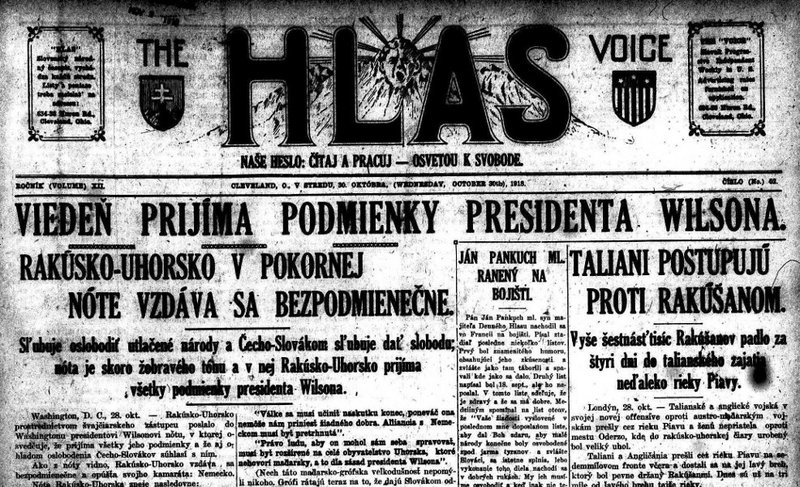
In 1926, this may not have been a reassuring adage for John Pankuch, long-time editor and publisher of Hlas ("The Voice"), Cleveland's only weekly Slovak newspaper. Pankuch had just lost his publishing company located at 634-38 Huron Road in downtown Cleveland, because, according to one of his grandsons, he had refused to publish certain articles in his paper that his major advertisers demanded he publish. However, as a result of this business loss, Pankuch now had some extra time on his hands. Ever the active journalist, he used this time judiciously, writing and then publishing in 1930 a book entitled "History of the Slovaks of Cleveland and Lakewood." The book, which draws in large part upon oral histories and written recollections of Cleveland's first Slovak immigrants--many of whom were still living at the time, is today an invaluable resource for learning about life in Cleveland's immigrant communities of the late nineteenth and early twentieth centuries.
Pankuch's own Slovak immigrant story is a compelling one. He became a newspaper editor, and consequently a leader in the Cleveland Slovak community, by accident--literally. In 1883, as a 13-year old, he had immigrated to the United States and joined his father, working as a coal miner in western Pennsylvania. A year after arriving in America, young John was involved in a mine accident in which he suffered a severe injury to one of his legs, nearly resulting in its amputation. When he finally recovered from that injury a year later, his mother refused to allow him to return with his father to the mines. Instead, the family gave the 15-year old boy the name of a Slovak immigrant friend living Cleveland and sent him there to study business.
Arriving in Cleveland, John Pankuch found a small, but closely-knit Slovak community. He never forgot the caring nature of this early community. As a result, "unity" became a theme that he would preach to the Slovaks of Cleveland and Lakewood for the rest of his life. While Pankuch was compelled to leave Cleveland and return to Hungary in 1888, after the death of his father in a coal mine accident, Pankuch returned to Cleveland just one year later in June 1889, bringing with him his soon-to-be wife, Rose Gasgaber, and a renewed determination to make his life in Cleveland. In October 1892, John Pankuch became a naturalized citizen of the United States, and was already beginning to become involved in local politics, his church, and in the printing and publishing businesses in Cleveland.
The story of John Pankuch's leadership in his immigrant community is a lesson in the importance of ethnic journalists to nineteenth century immigrant communities. Newspapermen, along with clerics, were often the most important leaders in these immigrant communities. While publishing "Hlas," Pankuch also served as a lay leader of Holy Trinity Lutheran Church, Cleveland's first Slovak Lutheran church. He founded the Slavonian Republican Club of Cleveland in 1897 and became a precinct committeeman. As a member of the Association of Slovak Journalists, Pankuch was instrumental in organizing the Congress that met at Cleveland's Grays Armory on May 26, 1907 to create the Slovak League of America--an organization subsequently of critical importance to the formation of the first Czechoslovak Republic in 1918.
After World War I ended, Pankuch remained active in the Slovak community. In 1923-1924, he chaired the committee which completed the purchase of and erected the General Milan Stefanik memorial statue in Wade Park near the Cleveland Museum of Art. Throughout the 1920s and 1930s, he was a featured speaker at almost every important event in the Cleveland Slovak community, always preaching his theme of ethnic success through ethnic unity. In 1937, Pankuch capped his civic career by serving as the national president of the National Slovak Society. Having resurrected his newspaper Hlas in 1932, he continued to publish the weekly Slovak paper in Lakewood until 1946. He died in that suburb in 1952 at the age of 82 years old.
Images











